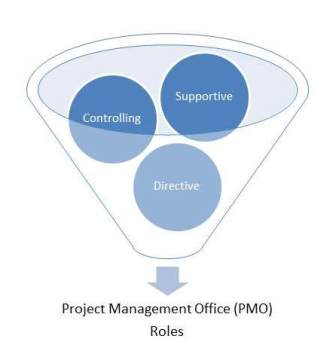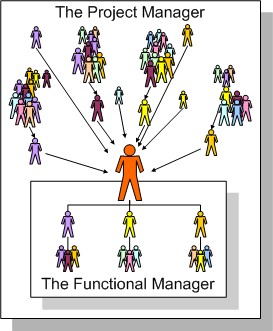By: Brad Egeland
In this article I’d like to address all of the key areas of the project where the project manager is managing the project delivery team, to some degree. The PM has many responsibilities and tasks of their own, and intertwined with all of those responsibilities is fulfilling the management, education, oversight, watchdog, and communication needs of his own delivery team full of skilled professionals that he now has the responsibility of herding toward a successful end project solution. There are touch points with the team, of course, throughout the engagement and key responsibilities that go with those, but I’d like to address critical phases or milestones of the project – at least from my own professional experience and perspective – when proper oversight and process was necessary to make sure things were running smoothly for the team, the project, and the customer.
The resource assignment process
Let’s assume the team is assembled by leadership within your organization – that has nearly always been the case from my experiences in professional services organizations. I’ve been in organizations where one person managed the PMO and assigned PMs to projects based on availability, geographic location, and expertise, and another managed the business analysts and made assignments to projects based on those same considerations.
The technical staff is usually managed by a development manager or CIO (or both) and the technical resource assignments are made based on availability and expertise and they are often not full project timeline assignments like the PM and the BA are. Those technical resources are assigned as needed and as determined by the project schedule and resource forecast maintained by the project manager.
Formally kicking off the project
Prior to the project kickoff of the project, the PM distributes all relevant project and contract information to all assigned delivery team members that have been procured to this point. For me, that has usually only been a business analyst or technical lead – almost never the entire team. This relevant information and documentation should include, at a minimum:
• Statement of Work
• Original resource hours forecast/budget as finalized an account manager when the project was finalized
• Initial project schedule as created by the account manager for the customer
• Contact information for project team members on both sides
• Any relevant travel and expense requirements as mandated by the customer
Prior to formal project kickoff, the project manager and the business analyst are preparing heavily for the formal kickoff meeting with the customer and planning for the move into an exploration and planning phase. Frequent, adhoc communication is happening at this point to coordinate efforts and ensure that both everyone is on the same page.
Onboarding resources as the project gets underway
Once the formal project kickoff session is over, technical resources will begin being assigned – as needed – to the project and the effort of managing the delivery team resources and forecasting for their usage becomes a more important task for the project manager. Bringing resources on before they are needed can break the budget, and bringing them on too late can disrupt the project schedule, so careful attention to the needs of the project timeline and tasks is critical.
As new resources are engaged on the delivery team side, four things must always happen…
• Provide the relevant project/contract docs for review
• Provide recent status reports and the project schedule for review
• Provide the resource forecast for review
• Hold a formal delivery team meeting to go over current status, key project info, and answer questions
Ongoing monitoring and control
As the project moves forward and the project delivery team is fully assembled, then the act of managing the project and resources basically becomes a process of utilizing PM best practices. Maintaining proper communication and the structure that should already be set in place will help ensure that each team member is up-to-speed at any given time on project status and what is expected of them at that moment and for the upcoming weeks. This proper communication/structure should be in the form of:
• Weekly delivery team meetings
• Adhoc delivery team communication
• Weekly formal status meetings with the customer
• Weekly delivery of the revised project schedule
• Weekly delivery of the project resource/budget expenses and forecast
 Planning marketing campaigns is not a walk in the park. There is so much at stake, not the least of which is the reputation of the marketing team. It’s the entire organization, however, that suffers when all the planning crashes and burns.
Planning marketing campaigns is not a walk in the park. There is so much at stake, not the least of which is the reputation of the marketing team. It’s the entire organization, however, that suffers when all the planning crashes and burns. The role of the Project Management Office (PMO) continues to gain prominence; many organizations of all industrial sectors are positioning them as key partners in the achievement of strategic objectives.
The role of the Project Management Office (PMO) continues to gain prominence; many organizations of all industrial sectors are positioning them as key partners in the achievement of strategic objectives.


 By: Brad Egeland
By: Brad Egeland This article was updated on 2016-01-09 to reflect the changes to PDU rules when PMI introduced the Talent Triangle.
This article was updated on 2016-01-09 to reflect the changes to PDU rules when PMI introduced the Talent Triangle. Dennis Brooke has been using web based project management communications tools since the late 1990s. In his recent interview on The Project Management Podcast he discussed how Enterprise 2.0 project management tools can make the most of communications between team, sponsors and stakeholders. PMPs can earn
Dennis Brooke has been using web based project management communications tools since the late 1990s. In his recent interview on The Project Management Podcast he discussed how Enterprise 2.0 project management tools can make the most of communications between team, sponsors and stakeholders. PMPs can earn  Andy Kaufman, PMP recently participated in an interview on The Project Management Podcast. PMPs can earn
Andy Kaufman, PMP recently participated in an interview on The Project Management Podcast. PMPs can earn